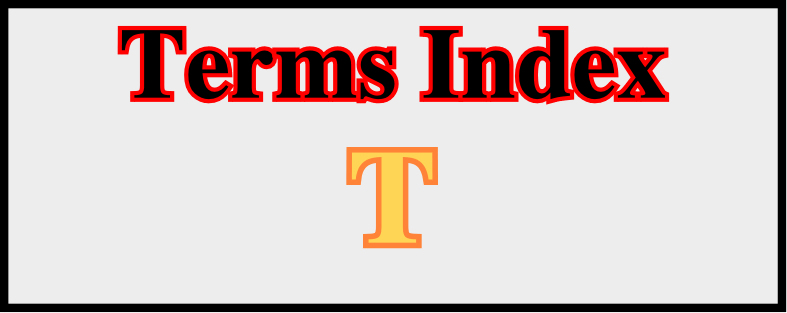

Tabular Salt (Diegel, F. A. et al, 1995)
A laterally extensive salt bodies with flat tops.
Tabular Salt Mini-Basin Province (Diegel, F. A. et al, 1995)
Expression, used in Gulf of Mexico, to refer to extensive salt sheets with intervening deep-water sediment-filled mini-basins.
A yellowish mineral: CaMg2Cl6.12H2O.
Taper Geometry (Talbot, C. J., 1995)
When the net rate R°/A°<1 (flow rate of salt minus dissolution /rate of aggradation minus compaction) and the top salt contacts are molded such that they converge upward (molding models).
Tapering Regime (Talbot, C. J., 1995)
When molded salt contacts are overstepped by overburden.
Geological surface individualizing two realms of deformation. Tectonic disharmonies are often associated with a mobile substratum whether salt or shale.
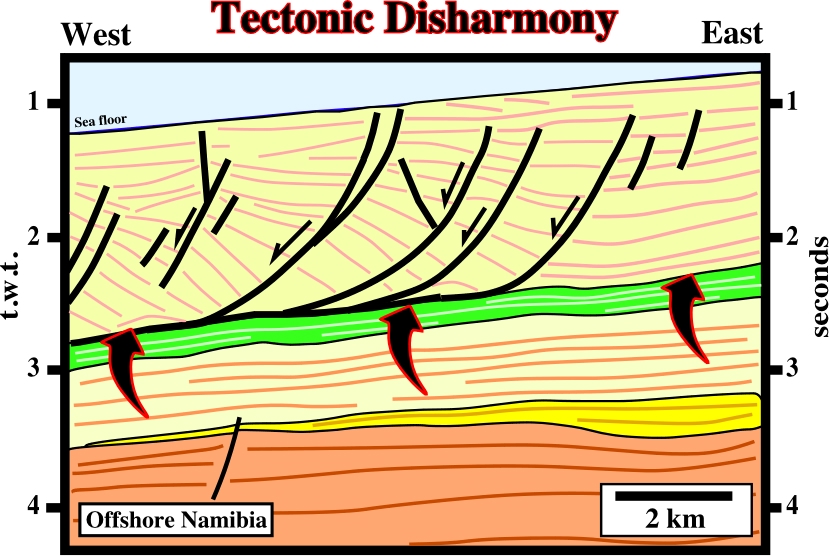
The tectonic disharmony illustrated on this seismic line seems induced by a thin shale layer. The sediments overlying the tectonic disharmony were lengthened by an extensional tectonic regime, while the sediments below the disharmony are mainly undeformed.
See: Structural Inversion
Stress created by the displacement of lithospheric plates. Tectonic stress is a vector acting parallel to the surface of the geoid.
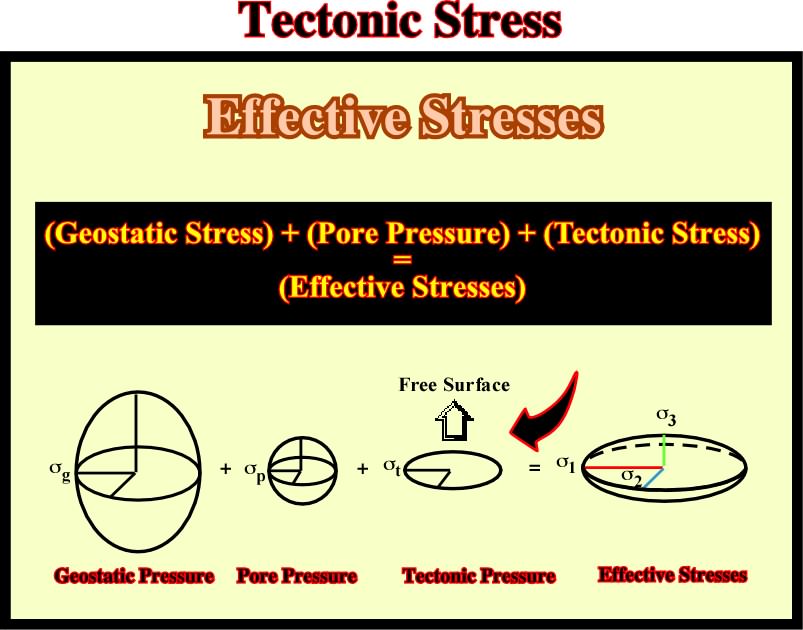
As illustrated above, it is not the tectonic stress that is the responsible for deformation, but the effective stresses, i.e., the sum of geostatic pressure, hydrostatic pressure and tectonic pressure. Actually, with a tectonic stress positive, the sediments can be lengthened (
1 vertical) or shortened (
1 horizontal).
Subsidence of the basement. It contrasts with the compensatory subsidence induced by salt flowage, in which the basement stays inactive. Tectonic subsidence curves are constructed by plotting the depth of an horizon, preferably the top of the basement at a series of ages through time. Such plots show the burial history of the plotted horizon. If the paleowater is included for each age-depth pair the plot shows total subsidence. When the total subsidence curve is corrected for local isostatic compensation and sediment compaction, the result is a tectonic subsidence curve. this curve shows the water loaded hole that tectonic can create if no sediments were deposited. This curve is used for calculating rates and magnitudes of tectonic subsidence.
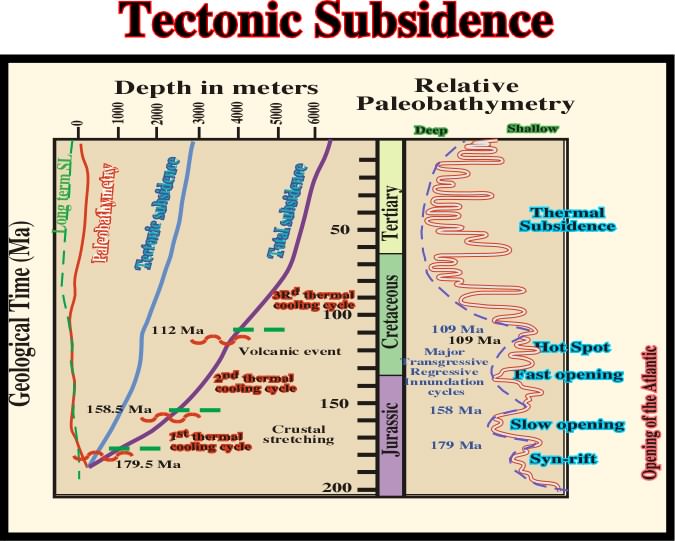
Among the stratigraphic and tectonic events associated with the opening of the North Atlantic proposed by Greenlee (1989), tectonic subsidence and total subsidence are determinant.
Peripheral sink that accumulates around a mature diapir that has exhausted the salt supply from its precursors pillow and is rising by necking or thinning of the diapir's stem. Coeval strata thin over the crest of the salt diapir.

These peripheral sinks thin over the crest of the salt stocks. They are completely disconnected from the mother salt layer. A secondary salt weld can be predicted between the salt stocks and autochthonous salt layer(?).
Salt weld joining strata originally separated by gently dipping allochthonous salt sheets.

A tertiary salt weld can be recognized near the eastern end of the allochthonous salt. At that level, a salt-induced tectonic disharmony can be recognized using the geometrical relationships between the seismic marker above and below the weld.
Thalassocraton (Bates, R. L. and Jackson, J. A., 1980)
A craton that is part of the oceanic crust. It is the English version of Tiefkraton (Stille, 1940) and a synonym of hedreocraton.
Rising of hotter salt and sinking of cooler salt as a result of a thermal gradient between the top and bottom of the convecting layers. A temperature-induced density inversion provides the necessary instability.
Term used for the first time by Rodgers (1963) for an interpretation that folds and faults involve only the upper strata and lie on a décollement beneath which the structure differs. By extrapolation thin skinned tectonics is used to the study of the structural features deformation above a décollement.
Diapirs rising from second-generation salt sheets.
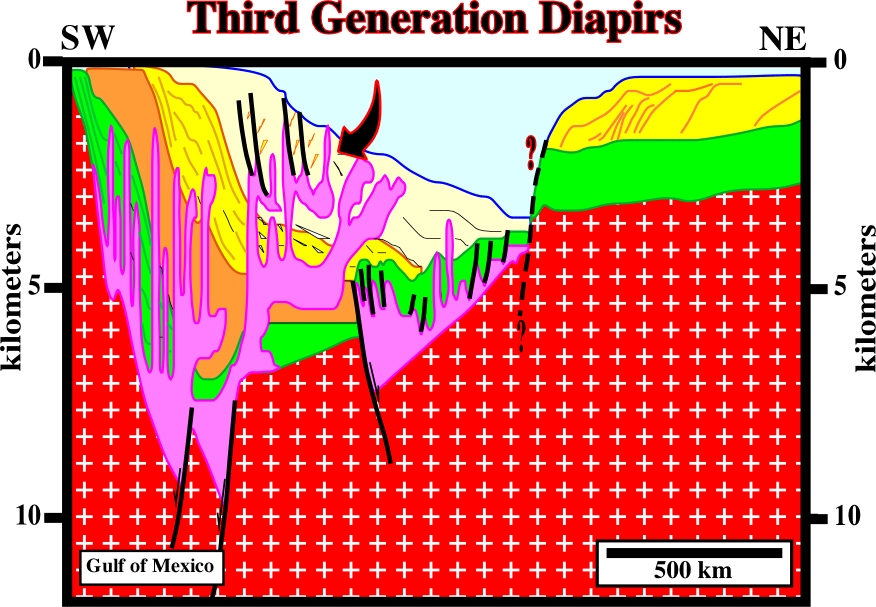
On this cross section of the Gulf of Mexico, a third generation diapir is considered, but, so far, it was not corroborated by seismic data.
Cell affecting only part of a single diapir, as in the growth of mushroom diapir bulbs.
Thrust-Fault (McNeill, L. et al., 1999)
A fault with a dip of 45° or less over much of its extension, on which the hanging wall appears to have moved upward relatively to footwall. Horizontal compression rather than vertical displacement is its characteristic feature.
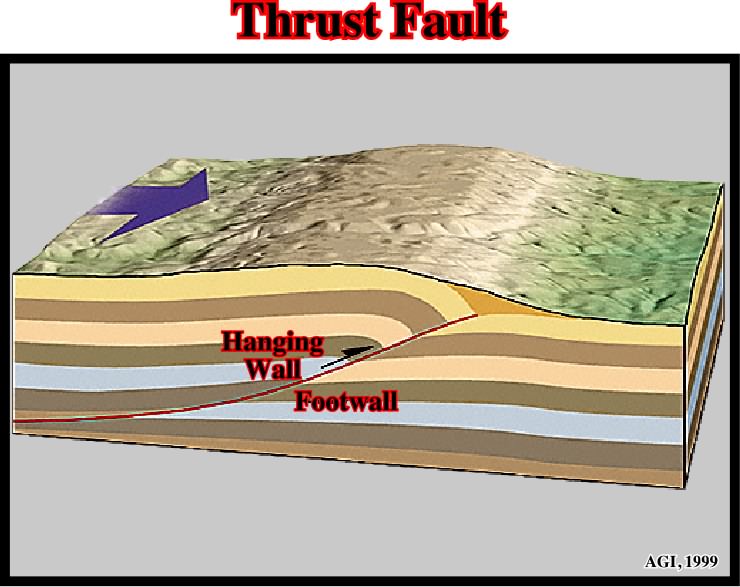
Thrust faults are created by compressional tectonic regimes with
1 horizontal and
3 vertical. Cylindrical-folds, striking parallel to the fault plan, develop in the hanging wall.
A strike-slip fault linking two spreanding centers in a mid-oceanic ridge.
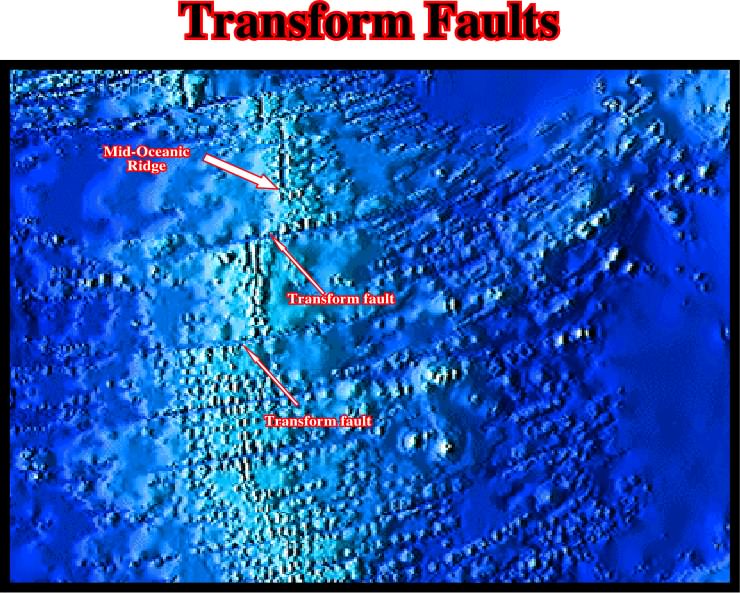
As illustrated on this map, transform faults are limited by mid-oceanic ridge segments. Beyond the mid-oceanic ridges there are no movement, therefore they are not active faults but just fracture zones.
Synonym of backstepping or retrogradational interval.
Transitional Salt (Heaton et al., 1995)
The offshore evaporites, in Yemeni Red Sea, which exact age is unknown and where the structure and composition of the underlying crust is also unknown.
Translation of the overburden across a stepped salt detachment (thin salt) bends the post-salt sediments and can create apparent translation downlap surfaces (gliding onlaps) in the synkinematic layers.
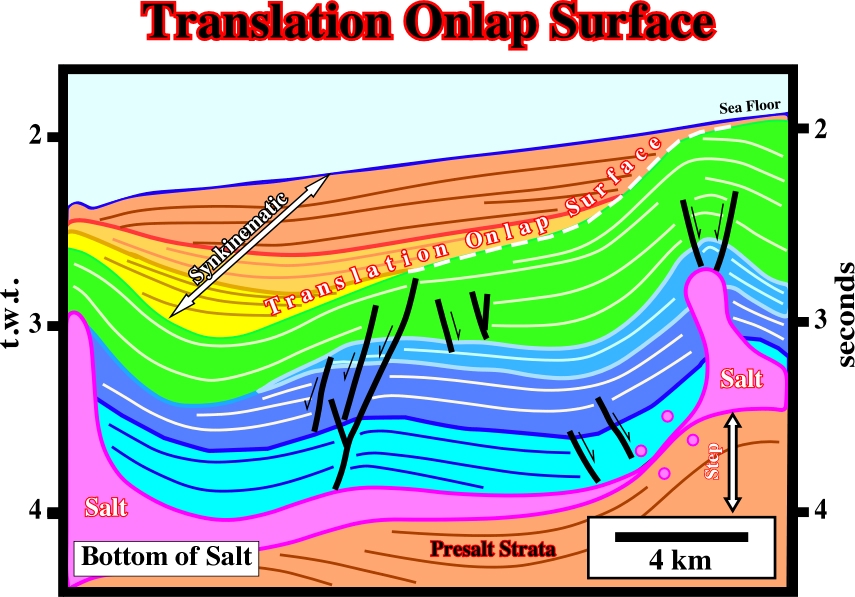
The apparent downlap surface created by translation of the overburden across a single emergent step, at the bottom of the salt, recognized on this line, is quite characteristic. In spite of the fact that the apparent downlap surface is directly associated with a salt step, its genesis is quite different of a salt weld.
Any barrier to the upward movement of hydrocarbons allowing to accumulate. A trap includes a reservoir rock and an overlying, lateral or updip impermeable rock, that is to say a seal.
The lower system of the Mesozoic erathem, above the Permian, of the Paleozoic era, and below the Jurassic.
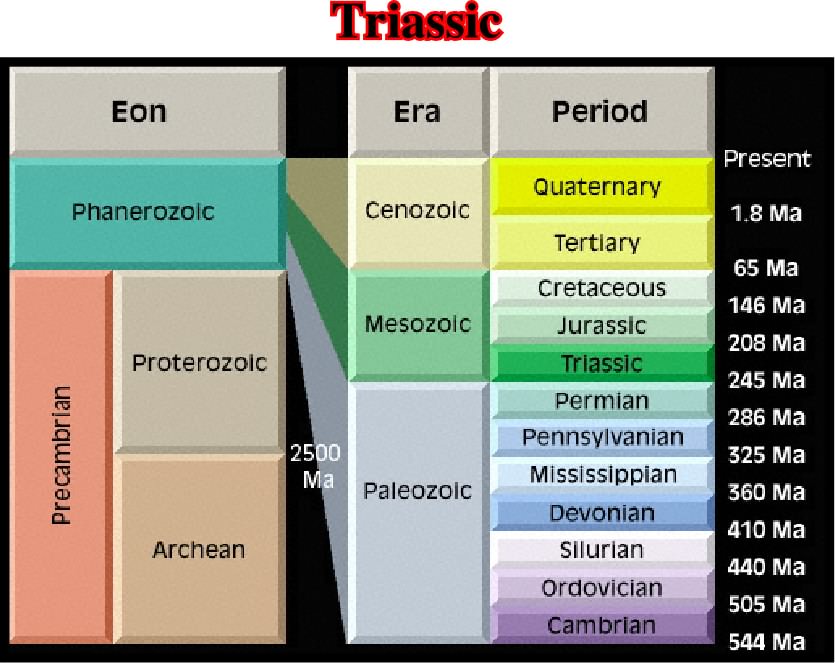
Triassic is also the time during which Triassic rocks were formed. The Triassic Period thought to have covered the span of time between 245 and 200-210 Ma.
Ellipsoid with three different and orthogonal axes.
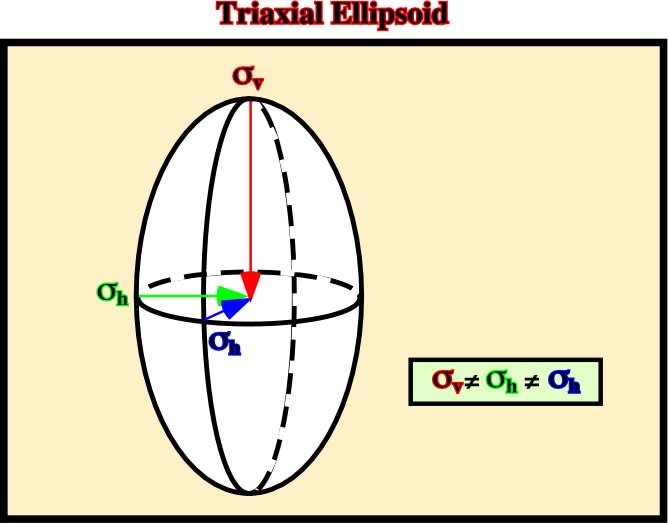
The majority of the tectonic regimes can be represented by triaxial ellipsoids. Only, the local tectonic regime associated with salt, shale domes and buried hills (differential compaction) are biaxial.
Geological model proposed by Trusheim to explain certain salt structures without significant lengthening of the overburden, i.e., halokinetic structures.
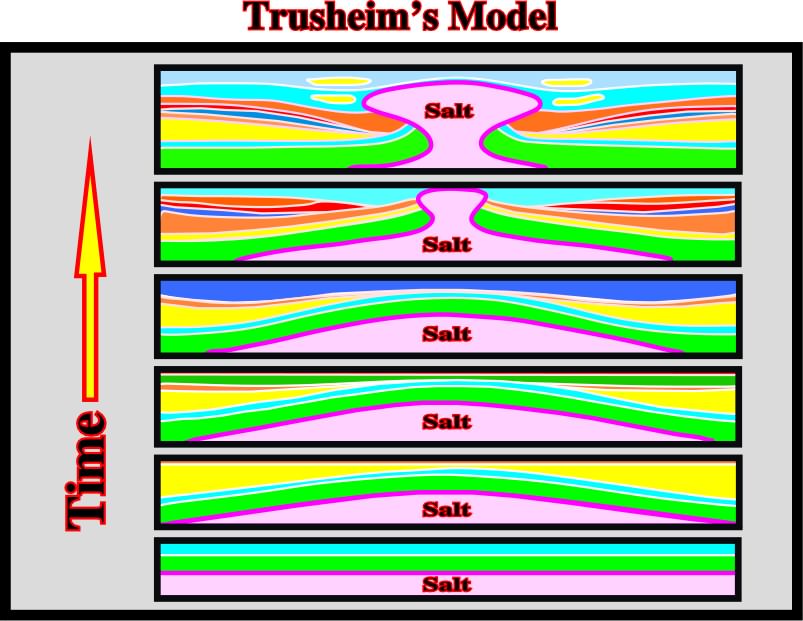
In this model, there is no extension and the amount of salt stays constant.
General term to express sediments deposited from, or inferred to have been deposited from, gravity currents.
Strata mounded between salt diapirs and having a flat base and rounded crest over a sedimentary thick. The antiform may or may not be cored by a low salt pillow. The turtle structure forms by structural inversion of a primary peripheral sink when salt is withdrawn from the margins of the peripheral sink by growing diapirs. The planform of the turtle structures is typically highly irregular, depending on the number, location, and relative vigor of the diapirs flanking it.
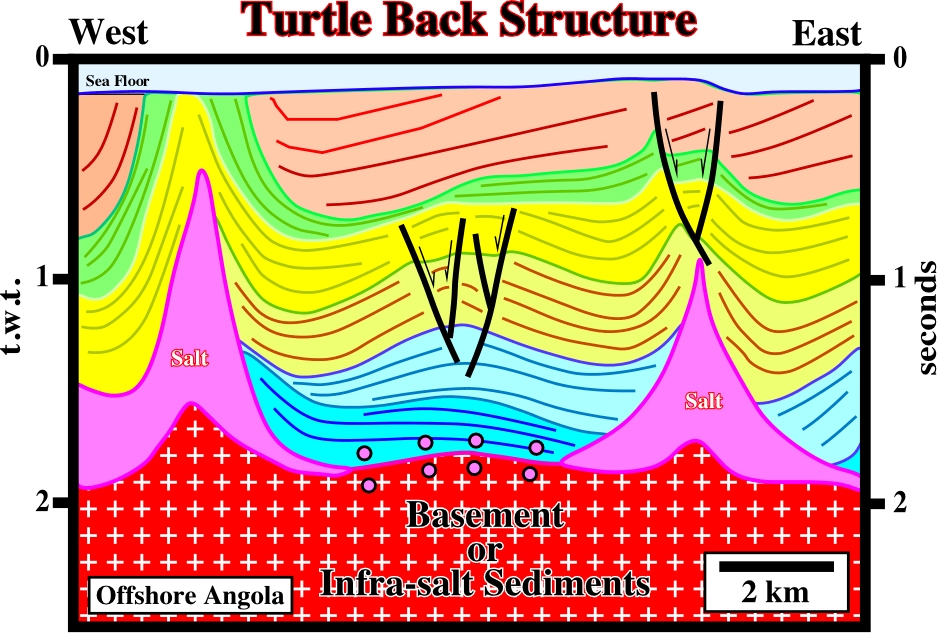
The first sedimentary interval overlying the primary salt weld has an inward thickening. The above interval thick whether the eastward or westward. Theoretically, in a real turtle back structure, there is a tectonic inversion, in which structural high points become low points and vice versa.